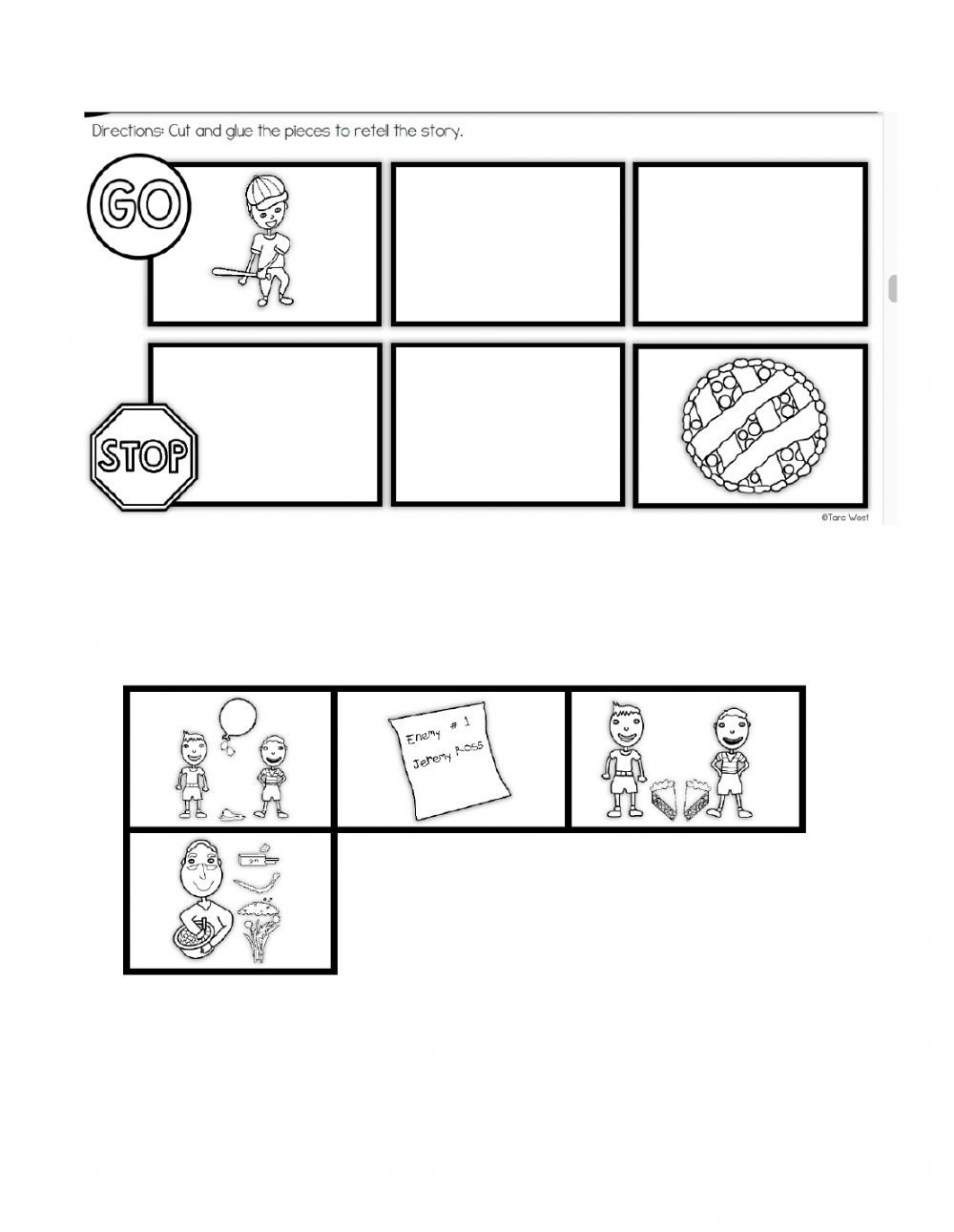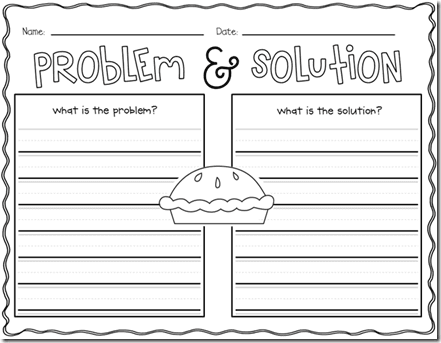Enemy Pie by Derek Munson is a wonderful picture book to use at any point throughout the school year to explore the themes of friendship, kindness, and sharing. It tells the heart-warming story of a boy and his ‘enemy’ Jeremy Ross, who benefit from parental encouragement to come to an effective solution. The following activities can be adapted for a variety of different age groups, from book reviews to word searches to story sequencing.
1. A Recipe for Friendship

Students are prompted to create their own ‘recipes’ for the perfect friendship after reading the book. They can connect with the experiences of the two characters and the activities they participated in to help develop their friendship.
Learn more: Housview.com
2. Story Sequencing

This engaging, interactive worksheet demonstrates the learner’s understanding of the story as they drag and drop the events in the correct order. This can also be printed to use as a cutout activity to color or kept as a digital resource.
Learn more: Liveworksheets
3. Using QR Codes

Using QR codes and supported worksheets, students can scan and listen to a reading of the story and complete the worksheet activities afterward to develop their listening skills. A fun, interactive lesson that provides a meaningful lesson on friendship!
Learn more: Teacher Sherpa
4. Making Comparisons

This simple Venn diagram is a great way to delve deeper into the similarities and differences between an enemy and a friend, in the same way, that the story covers. Simply print it and have kids fill it in!
Learn more: Susan Jones Teaching
5. Wonderful Wordsearch

Help kids develop their vocabulary skills after reading the story while checking their knowledge of key themes by asking them to find the associated words within this word search. A quick, fun filler activity!
Learn more: WordMint
6. Problems VS. Solutions

A great skill for students to develop is looking at the problems and potential solutions in the story. This easy-to-use worksheet is a great way to help them share the differences in list form.
Learn more: Grade Onederful
7. Predict the Story

Even before students begin to read and understand the story, they can make predictions based on the front cover and come up with ideas about the main themes. This could introduce a great competitive element to the classroom as well, as kids use pictures and keywords to find out who had the most accurate predictions!
Learn more: Liquid Literacy
8. Super Sweet Treats!

At the end of the unit, make your very own edible version of an Enemy Pie out of a secret recipe of crushed biscuits, to mimic the dirt cake and sweets from the story. Very easy to make, and very easy to eat!
Learn more: The Calming Corner
9. Crossword Puzzles

For older students, giving clues about the story in the form of a crossword puzzle will help them better understand and deduce information as they fill in the answers. Makes for a simple brain break or introduction to a literacy unit!
Learn more: WordMint
10. Grammar Hunt

This activity is perfect for developing grammar skills and knowledge whilst reading the story. Students can work individually or in pairs to search for typical grammatical elements such as verbs, nouns, and adjectives while filling in their worksheets.
Learn more: Collaboration Cuties
11. Points of View

This dynamic activity challenges kids to figure out what the characters are thinking and feeling at different points in the story. Students write their ideas on post-it notes and stick them to the ‘thought bubbles’ of the characters to spark discussion.
Learn more: HESGrade 2
12. Comprehension Questions

Have older students focus on comprehension and discussion skills by using these prompt questions. Kids can answer the questions in more depth by using comprehension strategies to help develop their descriptive writing skills.
Learn more: Chalkboard Publishing
13. Hands-on Learning

This activity is fantastic for engaging the whole class in a hands-on game. Create an ‘enemy pie’ from positive and negative items and use the question cards for children to pick from the bowl to answer. The team with the most ‘positive’ points at the end wins!
Learn more: The School Counselor Is In
14. Write a book review

Have older students write a book review at the end of the unit to demonstrate their understanding of this classic story. They can add author details, their favorite parts, and key lessons they have learned from the book.
Learn more: Teach Starter
15. Craft Pie!

For Kindergarten and primary students, creating their own pie craft can be a fun way to bring the story to life. Using paper plates and colored paper, kids can construct their pie in four easy steps. For older children, you could adapt this further and add keywords about friendship as well.
Learn more: Splyouth.org
16. Color A Pie!

Another simple craft and drawing activity has students coloring in and drawing their favorite pie. To incorporate more abstract thought, students can also draw and write what would make up their perfect friendship pie.
Learn more: Coloring Home
17. Make A Lap Book

This idea incorporates numerous activities to get a whole view of the story. You will need a large piece of paper and key titles to build the lap book before having students fill in the relevant sections with what they know, such as key vocabulary, conflict, and the setting of the story.
Learn more: Whimsy Workshop Teaching
18. Use a Graphic Organizer
This graphic organizer is an effective way to consolidate knowledge from the story. It helps learners to share what they believe to be the main ideas of the book and to reflect on them as well. They can also link their thoughts to a specific part of the story to support their ideas.
Learn more: Ladybug’s Teacher Files
19. Character Chef

This character traits activity helps students identify and compare key characters from the story. It’s a powerful way to develop independent study and deduction skills in young learners.
Learn more: Pinterest